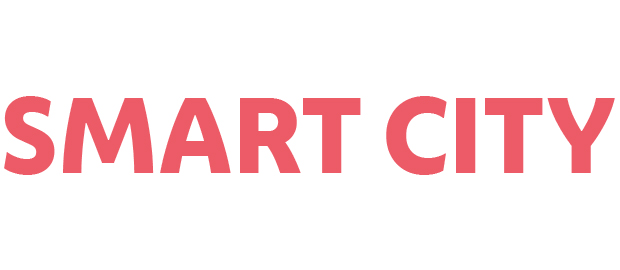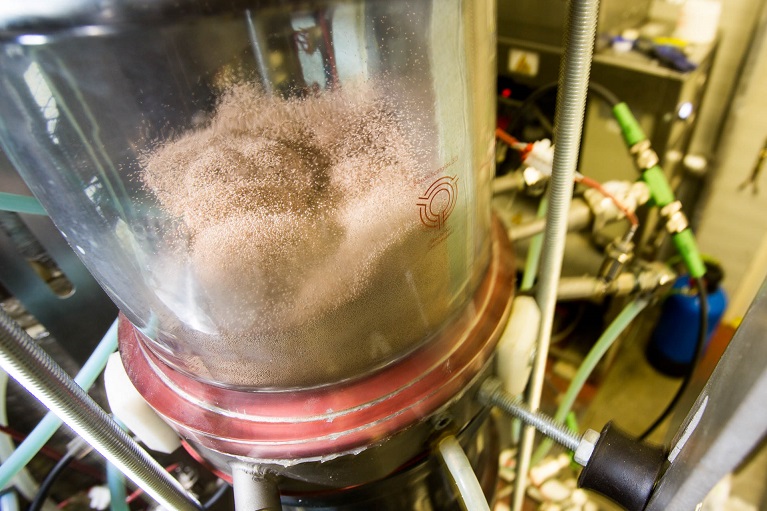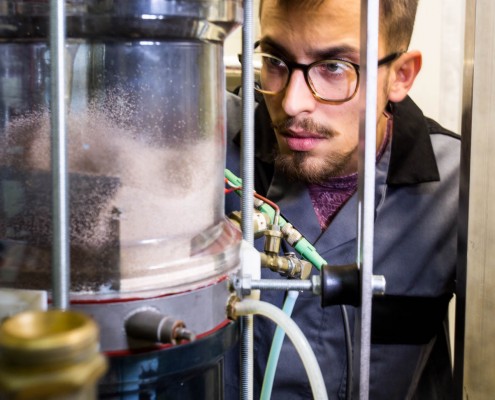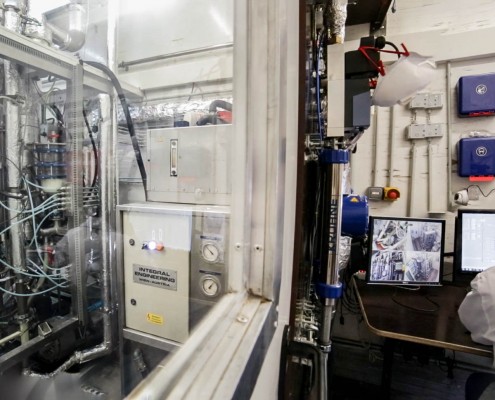By means of a new separation process, 90% of the carbon dioxide can be removed from exhaust gases and used thereafter, for example in agriculture.
Carbon dioxide can be a valuable resource for industry. It can, for example, be used as a fertilizer in greenhouses to improve plant growth. But for reasons of climate protection, it would be problematic to produce CO2 for this purpose, using fossil fuels. Filtering CO2 out of the exhaust gases from industrial processes, and turning it into something useful would be much more environmental friendly.
As part of the flagship project “ViennaGreenCO2“, that is co-supported by Shell and the Austrian Climate and Energy Funds, TU Wien is working with the University of Natural Resources and Life Sciences, Shell and other partners to develop a new kind of carbon-dioxide separation technique that is both cost- and energy-efficient. First separation tests in the laboratories of TU Wien have already proven that the technique works. Within the “ViennaGreenCO2” project, the separation process will now be further developed and the practical viability of the new concept will be demonstrated at pilot scale at the power plant sit from Wien Energie in Simmering.
Solids rather than liquids
“To selectively capture carbon dioxide from exhaust gases, one would usually use aqueous amine solutions as a liquid solvent,” says Gerhard Schöny (Institute of Chemical Engineering, TU Wien). However, these amine solvents have significant disadvantages. One major drawback is that a lot of energy is required to remove the CO2 from the solvent after it has been captured. Furthermore, tall absorption towers are needed so that the amine solvent has enough time to come into contact with the flue gas and to absorb the desired amount of CO2. At TU Wien, a different approach for separating CO2 is being followed.
“We are also working with amines,” explains Schöny. “But not in liquid form.” At TU Wien, a fluidised-bed system is being used, in which solid particles come into contact with the flue gas. The amines – which play an important role when separating the CO2 –are applied to the surface of the highly porous particles. Schöny is confident that the disadvantages of separation techniques using aqueous amine solutions can largely be overcome that way. Furthermore, the use of fluidised-bed systems may also result in small sizes of the CO2 separation plant itself, which may lead to further reductions of the CO2capture costs as compared to current separation techniques.
The new CO2 separation process has been developed by TU Wien together with Shell since 2011. It is crucial that the flue gas and the flow of active particles move in opposite directions. “With this basic idea in mind, we designed a reactor consisting of multi-stage fluidized bed columns,” says Gerhard Schöny. The flue gas moves from the bottom to the top, whereas the particles adsorb more and more CO2 as they move downwards through the adsorber column. The particles are then directed to the regenerator column. There, they are heated up, thereby releasing the CO2 again. The regenerated particles are then sent back to the adsorber to perform another CO2 separation cycle.
A bench scale unit has already been built and operated at TU Wien, and the concept now needs to be upscaled to pre-industrial levels. “Our bench scale unit can separate around 50 kg of CO2 every day, but now we want to build a pilot plant that can separate 5 tonnes per day,” says Schöny.
Carbon-neutral technology
The bench scale unit has already proven that the principle is sound, as it was possible to capture more than 90% of the carbon dioxide present in flue gas streams. One day, it may be possible to combine these CO2 separation reactors with biomass power plants. This would mean that electricity can be produced in a carbon-neutral way while the released “green” CO2 can be captured and used (CCU). Together with the ViennaGreenCO2 consortium partners, TU Wien wants to clarify the last few technical details over the coming years The pilot plant should be operational by 2018.The carbon dioxide that is separated by the pilot unit will be further processed and used as fertiliser in a test greenhouse run by LGV Frischgemüse.
Contact
Dr. Gerhard Schöny
TU Wien (Institut für Verfahrenstechnik, Umwelttechnik und Technische Biowissenschaften)
E-Mail: gerhard.schoeny@tuwien.ac.at
This post is also available in: German






